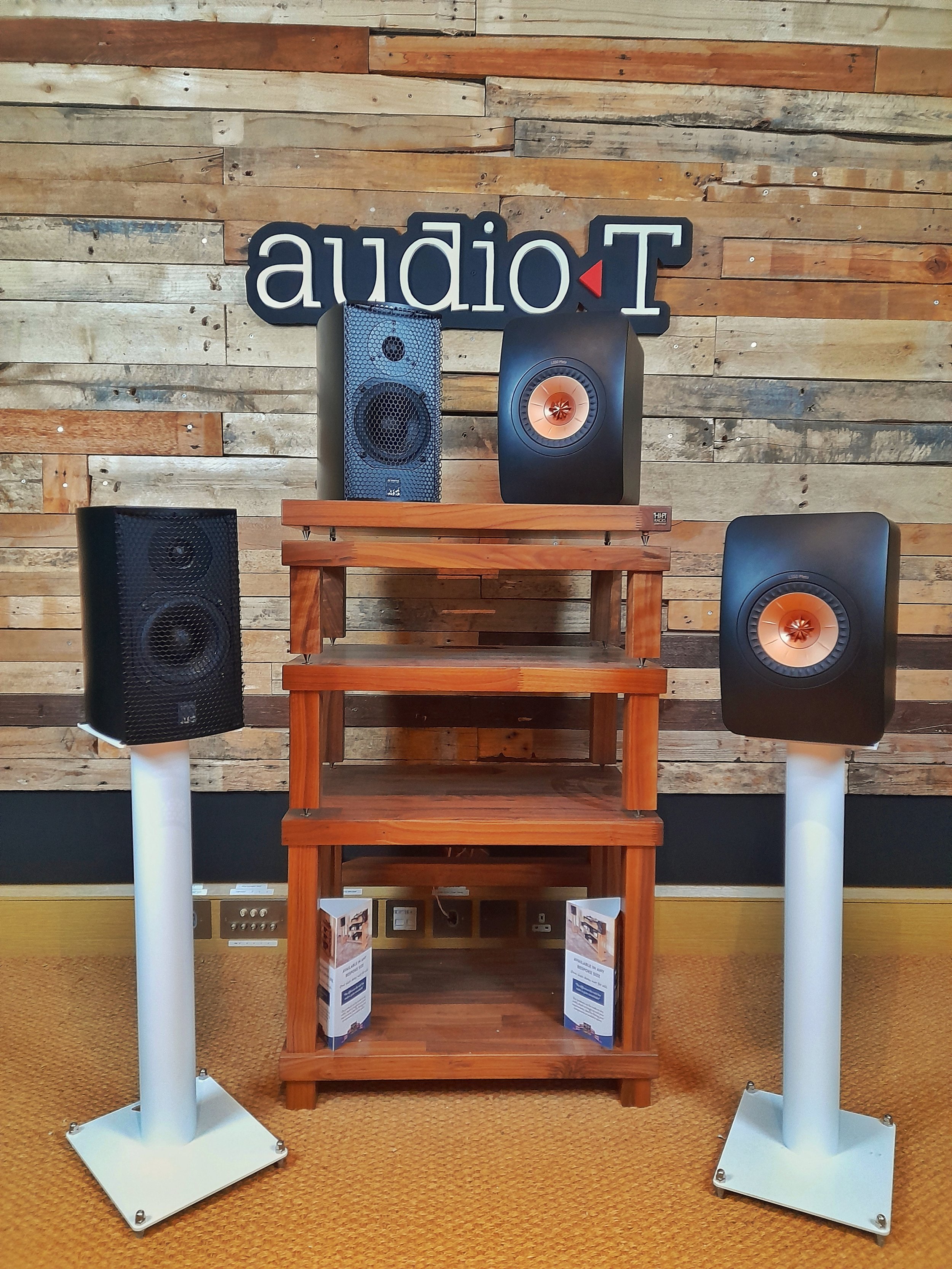What's in the box? - Infinite Baffle or Ported Speakers, what's the difference?
/Infinite Baffle or Ported are the two main types of box loudspeakers. Let’s look closer….
ATC SCM7. KEF LS50 META
First things first, What is infinite baffle?
A true form of infinite baffle doesn't technically exist, as it would need a flat baffle for the drive units that extends out infinitely. However an equivalent is to mount the drive units in a sealed cabinet to provide minimal “air spring” restoring force to the cone.
Infinite baffle or “IB” is used as a generic term for sealed enclosures of any size, The name coming from its ability to prevent interaction between the forward and rear radiation of a driver at low frequencies.
What are the pros to “Infinite Baffle” speakers?
Distance from walls - If you have a small room or awkward space it can be difficult to position “Reflex” or “ported” speakers. Due to the sealed box design of an “IB” speaker, it’s a little more forgiving for small spaces and they usually perform best when positioned closer to a rear wall, as you can gain up to 3dB of low end frequencies.
Low end clarity - The characteristics of an “IB” speaker allows for the ability to exercise more control over the low end. This in turn can allow the speakers to deliver a clear range of detail across the frequency range, aiding in separation and over all clarity.
Close monitoring - IB speakers do make a pretty good studio monitor. due to their ability to be placed “almost”anywhere, as well as their clean low end characteristics.
They sound great I hear you say, so what are the cons?
Ok now it gets difficult as there is no such thing as a “perfect” speaker, they all have their good points and less good points, and it’s no different with IB speakers….
Inefficient - Infinite baffle speakers are generally less efficient than ported designs, so require more amplifier power for the same output level.
Less deep bass - This can also be a positive too, aiding in room positioning. (two things being true for one statement, Oh my). “IB” speakers often have an analytical low end but not always the weight in the bass that many ported speakers have. So depending on the Genre they can be both good and bad at the same task.
That about does it for the “Infinite Baffle” section, Now let’s discuss “ported” designs
Ported speakers have a vented cabinet,
These “ports” are used to tune the cabinet resonance to a desired frequency. The air in the port, which may be a simple hole or a tube, acts as a mass against the compliance of the air inside the cabinet. The two work together in a resonant fashion, reversing the phase of the sound coming from the port at low frequencies, adding to the output of the bass cone instead of opposing it. Resulting in a more efficient speaker that is also more extended in the lowest frequencies.
A few of the pros for “ported” speakers
Extended bass - Ported speakers can provide deeper and more dramatic bass
Smaller - For a given bass output and efficiency a ported speaker can be smaller, making them easier to accommodate if size matters.
Cheaper - Just like tequila you may want to take this one with a pinch of salt. Although not true for all, the majority of good quality “IB” speakers come at a higher price due to their design, build material and overall engineering to perfect the sound.
So what are the cons of ported speakers?
Optimal positioning - In order to really get the best out of your “ported” speakers you’ll have to make allowance regarding the distance from walls. This will be greater than with an infinite baffle design. This can sometimes be difficult to achieve in the modern home. This is more of an issue with rear ported speakers, as the reflection from the wall will effect the sound. The closer to a wall the more bass you will get, however, some frequencies will sum together, some frequencies will partially cancel and some frequencies will completely cancel each other out.
Lack of control over the low end. Ported speakers rely on their vent or port to increase volume and low end response, however, this can make the speaker harder for the amplifier to control and in some cases can result in a “one note” bass, affecting clarity in mid and high frequencies.
What can we conclude from all this?
We are all looking for that perfect sound to suit our taste and unfortunately the reality is there is no right answer. But do not despair! We always recommend you sit down and have a listen to speakers and let your emotions be the judge. Use the reviews drafted by your favourite Youtube reviewer or the Hi-Fi forums to create a shortlist and come and listen in one of our demonstration rooms. Explore the vast sea of sound and set sail on your own voyage of discovery.
Thank you for reading - Luke & Nick- Audio T Portsmouth
If you have any questions about any of the equipment featured in this article, or any other Hi-Fi or home cinema enquiries, be sure to Contact Us.
If you’ve enjoyed this, why not go ahead and read some more of our other blogs, and be sure to follow us on our social media channels below…
You can see many of the different types of speakers we sell on our website Here.











